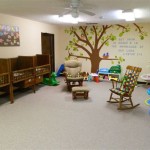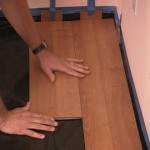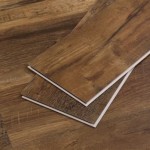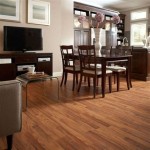Bellawood Hardwood Flooring Problems: A Comprehensive Overview
Bellawood hardwood flooring, a brand formerly exclusively sold by Lumber Liquidators (now LL Flooring), has faced scrutiny and generated numerous complaints over the years. While hardwood flooring is generally regarded as a durable and aesthetically pleasing option for both residential and commercial spaces, reported issues with Bellawood products have ranged from premature wear and tear to concerns about material quality and installation challenges. Understanding the nature and scope of these problems is crucial for consumers considering this brand, as well as those who have already installed Bellawood flooring and are experiencing difficulties.
This article will delve into the common problems associated with Bellawood hardwood flooring, exploring the factors contributing to these issues and offering insights into potential resolutions. It will examine complaints regarding finish durability, dimensional instability, and formaldehyde emissions, providing a balanced and informative perspective on the challenges that some consumers have encountered.
Finish Durability Issues and Premature Wear
One of the most frequently cited problems with Bellawood hardwood flooring is the apparent lack of durability in its finish. Many consumers have reported that the finish scratches, dents, and wears away much more quickly than anticipated, given the expected lifespan of hardwood flooring. This premature wear can lead to an unsightly appearance, requiring costly repairs or even complete floor replacement. The finish is the protective layer that shields the wood from daily wear and tear, spills, and scratches. Its degradation can expose the wood to moisture and further damage.
The types of complaints related to finish durability are varied. Some homeowners report that the finish scratches easily from everyday activities such as walking with shoes, moving furniture, or even pet traffic. Other complaints involve the finish clouding or becoming hazy, diminishing the floor's original luster. Still, others describe the finish peeling or chipping off in patches, exposing the bare wood underneath. These issues can occur even with careful maintenance and adherence to recommended cleaning procedures.
Several factors may contribute to the reported finish durability problems. One potential reason is the type of finish used on certain Bellawood products. While manufacturers employ various finishing techniques and materials, some finishes may be less resistant to abrasion and impact than others. The thickness of the finish layer also plays a crucial role. A thinner finish layer may be more susceptible to wear and tear. Additionally, the quality of the wood itself can impact the finish's performance. If the wood is not properly dried or if it contains excessive moisture, the finish may not adhere properly, leading to premature failure.
Furthermore, improper cleaning methods can exacerbate finish problems. Using harsh chemicals, abrasive cleaners, or excessive amounts of water can damage the finish and accelerate its degradation. Similarly, neglecting to use floor protectors under furniture legs can lead to scratching and denting. It is essential for consumers to follow the manufacturer's recommended cleaning and maintenance guidelines to maximize the lifespan of the finish and minimize the risk of damage. However, even with proper care, some Bellawood floors have reportedly exhibited finish durability problems, leading to frustration and dissatisfaction among homeowners.
Addressing finish durability issues can be challenging and may involve various solutions depending on the severity of the damage. Minor scratches and scuffs can often be repaired with touch-up kits or refinishing products designed for hardwood floors. However, more extensive damage may require professional refinishing, which involves sanding down the existing finish and applying a new coat. In some cases, complete floor replacement may be necessary if the finish damage is too severe or if the underlying wood is also damaged. Consumers experiencing finish durability problems with their Bellawood flooring should consult with a flooring professional to assess the extent of the damage and determine the most appropriate course of action.
Dimensional Instability and Moisture Sensitivity
Dimensional instability, referring to the tendency of wood to expand and contract with changes in humidity and temperature, is another common concern associated with Bellawood hardwood flooring. Hardwood is a natural material that absorbs and releases moisture, causing it to expand in humid conditions and shrink in dry conditions. This natural movement can lead to problems such as gaps between planks, buckling, warping, and cupping, which can compromise the floor's appearance and structural integrity.
Complaints related to dimensional instability in Bellawood flooring often involve noticeable gaps forming between planks, particularly during the winter months when humidity levels are typically lower. These gaps can become unsightly and can also trap dirt and debris, making cleaning more difficult. In more severe cases, the planks may buckle or warp, creating uneven surfaces and potential tripping hazards. Cupping, where the edges of the planks rise higher than the center, is another common manifestation of dimensional instability.
Several factors can contribute to dimensional instability in hardwood flooring. One of the most important factors is the moisture content of the wood at the time of installation. If the wood is not properly acclimated to the environment before installation, it may undergo excessive expansion or contraction after installation, leading to dimensional problems. Acclimation involves allowing the wood to adjust to the temperature and humidity levels of the installation environment for a specific period, typically several days or weeks. Failure to properly acclimate the wood is a common cause of dimensional instability issues.
Another contributing factor is the subfloor. A subfloor that is not level, stable, or properly prepared can exacerbate dimensional instability problems. If the subfloor is uneven, the hardwood flooring may not be properly supported, leading to localized stress and movement. Similarly, a subfloor that is not dry or that is prone to moisture infiltration can cause the hardwood flooring to absorb excess moisture, leading to expansion and warping. Proper subfloor preparation is crucial for ensuring the long-term stability of hardwood flooring.
The species of wood used in the flooring can also influence its dimensional stability. Some wood species are more prone to expansion and contraction than others. For example, softer woods tend to be more dimensionally unstable than harder woods. The way the wood is cut, whether it's quartersawn, plainsawn, or riftsawn, also affects its stability. Quartersawn wood is generally more stable than plainsawn wood because its grain orientation is less susceptible to changes in moisture content.
Addressing dimensional instability issues can be challenging and may require a combination of strategies. Maintaining consistent humidity levels in the home is crucial for minimizing expansion and contraction. Using a humidifier during the winter months can help to prevent excessive drying and shrinking of the wood. Conversely, using a dehumidifier during the summer months can help to reduce excessive moisture absorption. Repairing gaps between planks may involve using wood filler or caulking, while more severe buckling or warping may require plank replacement. In some cases, it may be necessary to completely remove and reinstall the flooring to address underlying subfloor issues or to ensure proper acclimation.
Formaldehyde Emissions and Health Concerns
Formaldehyde emissions from Bellawood flooring have been a significant concern for some consumers, stemming from formaldehyde being a component in some adhesives used in the manufacturing of engineered hardwood flooring and laminate flooring. Exposure to formaldehyde can cause various health issues, including respiratory irritation, skin rashes, and allergic reactions. In extreme cases, long-term exposure to high levels of formaldehyde has been linked to cancer.
The specific concerns regarding formaldehyde emissions from Bellawood products arose from allegations that some of their laminate flooring, and potentially some engineered hardwood flooring, did not meet California Air Resources Board (CARB) Phase 2 standards for formaldehyde emissions. CARB Phase 2 is a stringent regulation designed to limit formaldehyde emissions from composite wood products. These allegations led to lawsuits and increased scrutiny of Lumber Liquidators' sourcing and testing practices.
Formaldehyde is a naturally occurring chemical compound that is used in various manufacturing processes, including the production of resins and adhesives used in wood products. In engineered hardwood flooring and laminate flooring, formaldehyde-based adhesives may be used to bond the layers of wood or composite materials together. When these adhesives release formaldehyde into the air, it can contribute to indoor air pollution.
The potential for formaldehyde emissions from flooring products depends on several factors, including the type of adhesive used, the manufacturing process, and the ventilation of the installation environment. Products that are not properly manufactured or that use excessive amounts of formaldehyde-based adhesives are more likely to emit higher levels of formaldehyde. Poor ventilation can also trap formaldehyde in the air, increasing exposure levels.
Addressing formaldehyde emission concerns requires careful selection of flooring products and proper installation practices. Consumers should look for flooring products that are certified to meet CARB Phase 2 standards or that are labeled as "formaldehyde-free." These products have been tested and verified to emit formaldehyde at levels that are considered safe. Proper ventilation of the installation environment is also crucial for reducing formaldehyde exposure. Opening windows and using fans can help to disperse formaldehyde emissions and improve air quality.
If consumers are concerned about formaldehyde emissions from existing Bellawood flooring, they can take steps to mitigate the risk. Increasing ventilation by opening windows and using air purifiers can help to reduce formaldehyde levels in the air. Sealing the flooring with a low-VOC sealant can also help to prevent formaldehyde from being released. In some cases, it may be necessary to remove and replace the flooring with a product that meets CARB Phase 2 standards or that is labeled as "formaldehyde-free." Consumers experiencing health problems that they suspect may be related to formaldehyde exposure should consult with a medical professional.

Bellawood From Lumber Liquidators

Ll Flooring Bellawood Character Red Oak 10047316 Review Consumer Reports

Hallways And Maple Bellawood Floors Suburban Pop
Casa De Color Hardwood Flooring Review Problems With Stain Alignment

Ll Flooring Bellawood Natural Hickory 10034423 Review Consumer Reports

Hallways And Maple Bellawood Floors Suburban Pop

Casa De Color Hardwood Flooring Review Problems With Stain Alignment

Ll Flooring Bellawood Geneva White Oak 10045563 Review Consumer Reports

Hand Sc Floors How To Texture A Floor Part One Hardwood

Casa De Color Hardwood Flooring Review Problems With Stain Alignment
Related Posts








